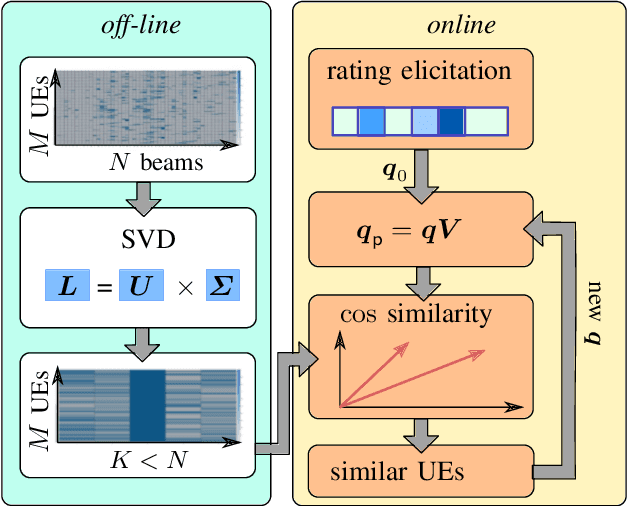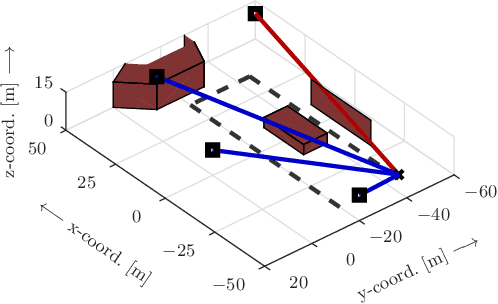Efficient Beam Search for Initial Access Using Collaborative Filtering
Paper and Code
Sep 14, 2022



Beamforming-capable antenna arrays overcome the high free-space path loss at higher carrier frequencies. However, the beams must be properly aligned to ensure that the highest power is radiated towards (and received by) the user equipment (UE). While there are methods that improve upon an exhaustive search for optimal beams by some form of hierarchical search, they can be prone to return only locally optimal solutions with small beam gains. Other approaches address this problem by exploiting contextual information, e.g., the position of the UE or information from neighboring base stations (BS), but the burden of computing and communicating this additional information can be high. Methods based on machine learning so far suffer from the accompanying training, performance monitoring and deployment complexity that hinders their application at scale. This paper proposes a novel method for solving the initial beam-discovery problem. It is scalable, and easy to tune and to implement. Our algorithm is based on a recommender system that associates groups (i.e., UEs) and preferences (i.e., beams from a codebook) based on a training data set. Whenever a new UE needs to be served our algorithm returns the best beams in this user cluster. Our simulation results demonstrate the efficiency and robustness of our approach, not only in single BS setups but also in setups that require a coordination among several BSs. Our method consistently outperforms standard baseline algorithms in the given task.
 Add to Chrome
Add to Chrome Add to Firefox
Add to Firefox Add to Edge
Add to Edge